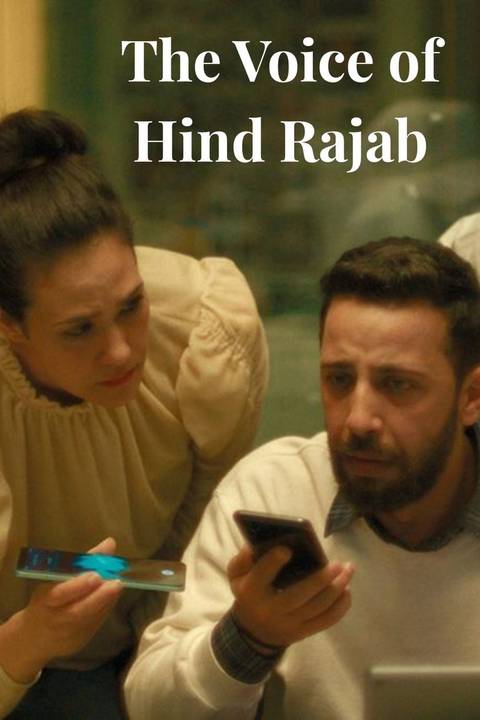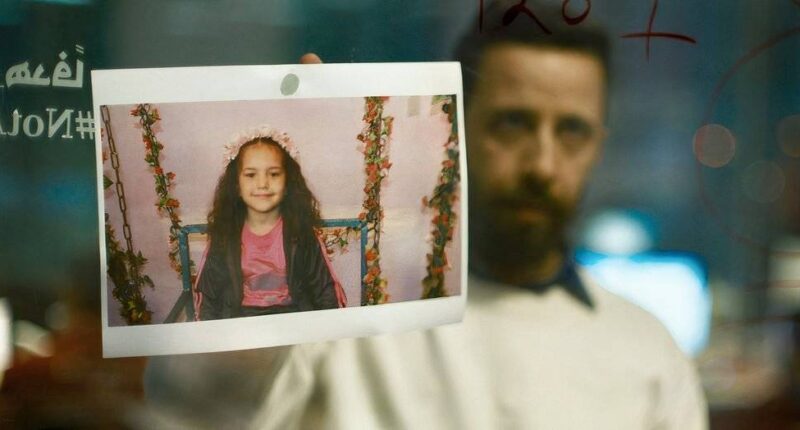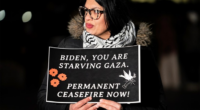In the last two years, as Israel’s onslaught in Gaza has wrought at least 67,000 deaths, the Palestinian genocide has been live-streamed on our phones and social media feeds. It is “the first genocide in history where its victims are broadcasting their own destruction in real time in the desperate, so far vain hope that the world might do something,” charged Irish barrister Blinne Ní Ghrálaigh in January of 2024. At least 20,000 of those deaths have been children — at a rate of one child per hour. The same month that she said so, one of those children’s deaths made particular noise in the international community: the murder of five year-old Hind Rajab.
Rajab was murdered, alongside six of her family members. While she held out as long as possible, her potentially life-saving help was taken, too, as two paramedics were bombed mere yards away. Trapped in a shattered car with the blood of her family members on her, Rajab spent the last hours of her life on the phone with workers at the Palestine Red Crescent Society (PRCS), an affiliate of the Red Cross, who desperately attempted to circumvent the Draconian red-tape imposed by the Israeli military.
Director Kaouther Ben Hania’s The Voice of Hind Rajab is a shattering docu-film which utilizes a novel mix of real audio and footage with actors’ reconstruction in a Herculean effort to make this profound loss even more immediate. Hers is a utilitarian mission: to embed the audience in the sensory experience of being in a war zone without letting them scroll past or swipe to the next video. If ever there was a film that demanded an in-theater experience, it is Ben Hania’s urgent piece of work.
The Voice of Hind Rajab Astonishingly Pays Tribute to a Particularly Horrific Crime
Ben Hania (last year’s Four Daughters) has long adeptly straddled the line between fiction and non-fiction, but with The Voice of Hind Rajab that skill reaches devastating new heights. A relatively real-time thriller, if one can be permitted to call it that, the film concentrates its focus inside the office of the PRCS as it handles Rajab. Omar (Motaz Malhees) is the phone operator who first takes the distress call, whose hospitable tone quickly shifts into urgency when he hears from Rajab’s uncle, who lives in Germany.
Things immediately take a bleak turn when the line is cut, and Omar believes he has already lost the girl to gunfire. Nisreen (Clara Khoury), the office counselor, immediately springs into action to console Omar by providing him with the option of taping a girl’s silhouette to his cubicle wall. The sobering gesture is invoked when the identity of a victim cannot immediately be placed; Nisreen suggests that once they identify her and obtain a photograph, that she can be posted on a cork board specifically designated to pay tribute to the dead.
But, suddenly, there is life. Rajab is not yet dead, and her cries of anguish become a painful ticking time bomb. With his supervisor, Rana (Saja Kilani), the team works to extract crucial information about her identity while keeping her calm. Their boss, Mahdi (Amer Hlehel) wades through a complex set of levers to get approval for an ambulance to extract her.
It becomes clear quite quickly that this will not be an easy job. Given the circumstances of the Israeli military’s incursion, the PRCS cannot get an ambulance clear passage until it is approved first by the Red Cross, and after that by the military. Even though the nearest ambulance is a mere eight minutes away, the process takes endless hours to complete. Mahdi insists that they wait for the “green light,” while Omar gets increasingly more agitated at the lack of action.
Like Agnieszka Holland’s Green Border, which was made in the midst of the Russian invasion of Ukraine, The Voice of Hind Rajab benefits from its immediacy. The film is a constant anxiety attack, and it is the trick of the cinema that, despite knowing the tragic end to the story ahead of time, we sit in anguish and in desperate, vain hope that Rajab’s life might be saved. The girl’s death was an even louder one than most during the genocide because of the IDF’s targeting of the ambulance that was mere yards away, and one of the rare instances that has attracted global condemnation.
Lest it be thought that the film is exploiting one innocent girl’s death, it should be noted that Ben Hania’s objective is not merely to build tension. The bulk of the film is an internal battle between Omar and Mahdi whose categorically different approaches to this dire situation reveal a situation made all the more difficult by Israel’s delegitimizing of humanitarian efforts. Mahdi is not incorrect in insisting on following protocol; it is just that the protocol they must follow is a deliberately frustrating web designed to curtail their efforts.
To make the interpersonal fighting even more apparent, Ben Hania and cinematographer Juan Sarmiento G. shoot on a handheld camera with uncomfortable intimacy. Omar’s strained purple lips, Rana’s perpetually tear-stroked face, Mahdi’s sweating head are all rendered in textured detail. The office, which is adorned with a series of glass doors and walls, persistently offers reflections upon reflections, which the filmmaking team uses to create overlapping images of tireless, overworked workers giving everything they have to the cause.
At times throughout the film, the actual recorded audio of their long phone calls with Rajab supplant the actors’ voices. And, in one particularly heartbreaking scene near the film’s conclusion, a hand holds up a camera to record Nisreen for their social media. But instead of actress Clara Khoury’s face, we see the actual video shot at the time of Rajab’s death. What all these moments do is accentuate the realness of the real. These are not characters in a movie, they are real human beings with hopes and desires, ambitions and families.
Many cultures and religions, novelists and thinkers have all posited the idea that an entire universe is contained within every single human being. The idea is that entire lives full of possibility are achievable by all if given the opportunity of life. It has become all too easy in the social media age to literally scroll past the lives of others, but in Ben Hania’s hands, at least one has been given something back: the chance at a proper remembrance.
The Voice of Hind Rajab screened at the 2025 AFI Film Festival

- Release Date
-
November 26, 2025
- Runtime
-
89 minutes
- Director
-
Kaouther Ben Hania
- Writers
-
Kaouther Ben Hania
- Producers
-
James Wilson, Odessa Rae, Nadim Cheikhrouha
-

Motaz Malhees
Omar A. Alqam
-

Saja Kilani
Rana Hassan Faqih
-

Amer Hlehel
Mahdi M. Aljamal
-

Clara Khoury
Nisreen Jeries Qawas









